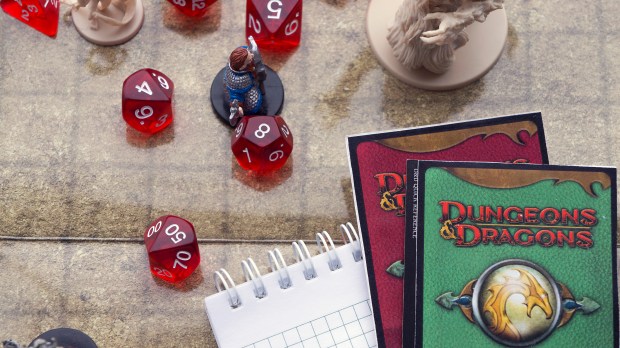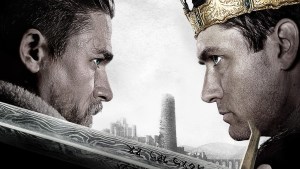When the Harry Potter series first appeared in 1997, I became engrossed in that world of fantasy and wonder. I distinctly remember bringing the books with me to Boy Scout summer camp to read in the humid evenings, fending off mosquitos and reading by flashlight. By the time springtime of 2000 rolled around and I could finally go see a Harry Potter movie, the first teaser trailer for Lord of the Rings appeared. My father turned to me and pointed at the screen saying, “You think Harry Potter is great? Wait until these movies come out. Now those are fantasy. We’re going to read those books.”
I devoured The Hobbit and Lord of the Rings trilogy as I waited for each new Peter Jackson film to premiere. Without any previous knowledge of Tolkien, I was able to intuit Catholic themes within the work. I remember discussing the lembas bread as a parallel to the Eucharist. After doing some research, I was delighted to discover that the author was Catholic, and that Catholicism was baked into the work without it being explicit–showing, but not telling.
In college, one of my friends from the school marching band had been talking about this Dungeons & Dragons game and wanted our group of friends to play the latest, fourth edition. I was curious enough to try it, rolling up the stats for my first-ever character, a human wizard named Otto von Krieg. I had created an avatar for myself to play as I explored the game world. But this wasn’t electronic and passive; I was moving a miniature game piece, but I was living and breathing as the character. I became Otto. Others created their own characters as they wished: good, evil, dwarf, elf, human, etc.
The Dungeon Master, the “referee” of the game, would gather us around and paint the scene (we met in an imaginary tavern). In stories and games, for the most part, civilization and the towns are safe havens–places to lick your wounds, meet new people, repair your armor, buy new gear, and enjoy some downtime in the local watering hole. Real life happens there, but so do plot hooks for the next adventure.
With the mission of evangelization–bringing the Gospel and Christ to all corners of the globe–I think the tabletop has room for honest conversations about religion and living with faith. After all, a world of magic and fantasy has deities that can be interacted with in a very real sense within the game, as you are imbued with the powers of your god to smite enemies or call upon them to intervene in the most dire circumstances. How similar is the Holy Spirit active in our lives? How much more real can you get than the Real Presence in the Blessed Sacrament of the altar? What more engaging stories exist than those shared within the Gospels?
While Dungeons & Dragons mythology treats deities in a very Manichean sense, we know that Jesus Christ has already conquered sin and death, calling us to pick up our crosses and follow Him. Dungeon Masters are free to borrow and create their own game worlds, as are player characters when they create the life and backstory of their heroes.
For some people who play Dungeons & Dragons, faith is simply a game mechanism that exists only for the divine magic-based heroes to perform amazing feats of prowess. I think it’s important to remember that people of faith play this game, too. As such, we have a responsibility to exemplify the commandment of Christ to love God and one another, especially when we encounter others who disagree with or are ignorant of the Gospel.
Following the example of Tolkien, I have been trying to weave Christianity into the foundations of my own game world. Like the Music of the Ainur from the Silmarillion, my world seeks to call to mind the story of creation in the book of Genesis. God is the creator of the universe, and the paganesque deities of mortals within the game world function like the Valar of Tolkien. In my setting, a communion of saints and heroic figures of the past exist. They can be petitioned and asked to intercede on the behalf of common folk and adventurers alike.
A world is nothing without its people. Perhaps, drawing from the saints, you might be inspired to become a holy warrior who eschews armor for simple tunics and is a friend to man and animal (reminiscent of St. Francis of Assisi). Perhaps you’re inspired to become a former soldier in the emperor’s army, one who refuses to renounce their faith, becoming a folk hero standing up for their beliefs and slaying the ferocious dragon (like my patron St. George). Maybe you want to astound both your Dungeon Master and your fellow adventurers by basing your character on St. Martha, who according to legend defeated a tarasque (one of the most difficult monsters to fight in all of Dungeons & Dragons!) by displaying a holy symbol and splashing the creature with holy water. Saints can be great models, inspiring the creation of characters with deep and abiding love for God. Saintly characters would certainly lead to unique and lasting interactions between the players at your table, both in and out of the game.
The same can be done for the non-player characters of the world as well. The fantasy genre as a whole has had to deal with the baggage of different species and cultures being coded to speak for whole groups of people as inherently evil or defined solely by harmful stereotypes. Gamers and designers in the tabletop space have worked hard to remove problematic elements and help better stories be told. The ancient undead wizard that has summoned the group to their tower could be offering you a questline to help them in the process of seeking redemption and surrendering their soul to their deity. The hulking ogre that guards the bridge you are trying to cross without paying the toll might fight you all, but he may refuse to land a killing blow. This is because the ogre was instructed by the king to reciprocate the mercy he was shown by the king–a kind of fantasy tabletop retelling of the parable Jesus shares in Matthew 18:21-35. The unassuming bricklayer who was cursed by a vampire still has faith in his god and refuses to attack the townspeople in order to satiate his hunger and protects the hamlet from bandits and thieves.
The rules and mechanics of Dungeons & Dragons form a flexible framework. With only the limits of your imagination and the cohesion maintained by the Dungeon Master, there are thousands of stories that are waiting to be told. If our comic books and films are quick to turn to Greek and Norse mythology, why shouldn’t our tabletop games weave Christianity into the fabric of characters and stories? We can become a J.R.R. Tolkien, a C.S. Lewis, or a G.K. Chesterton to someone else. We can let our characters in the game world help to spur the longing of so many restless hearts toward Christ.
Whether we are at the table of a game or at our local pub enjoying a pint, we need to be sure that we are authentically living the Gospel and finding ways to invite others to the seats in our pew. Build your world, make your characters, and share your stories that proclaim Christ crucified and resurrected.


